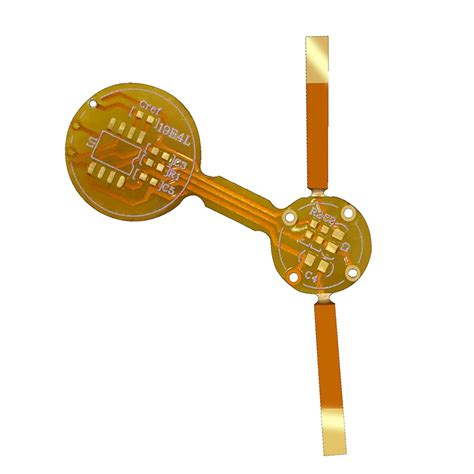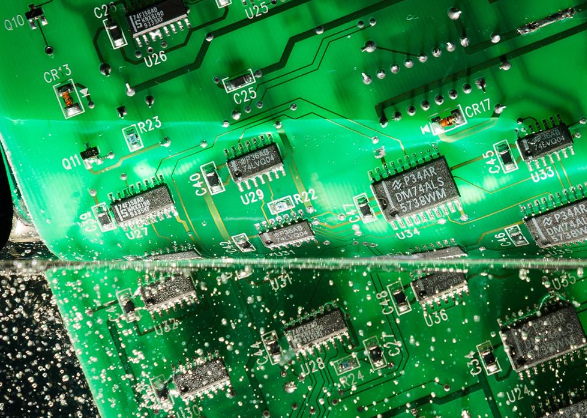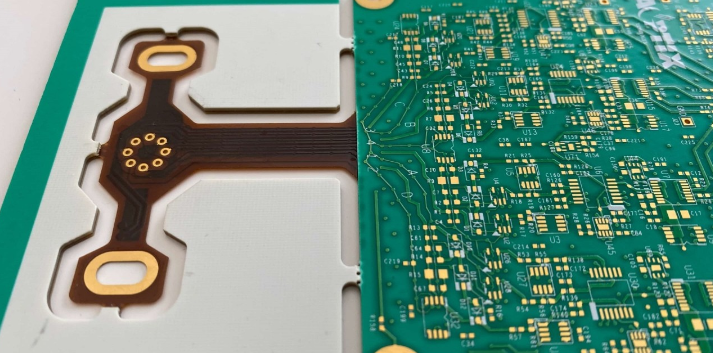Multilayer aluminium pcb
Advantages Of Multilayer Aluminium PCBs In Modern Electronics
Multilayer aluminium PCBs have emerged as a pivotal component in the realm of modern electronics, offering a multitude of advantages that cater to the ever-evolving demands of contemporary technology. As electronic devices become increasingly complex and compact, the need for efficient, reliable, and high-performance circuit boards has never been more critical.
Multilayer aluminium PCBs, with their unique properties and benefits, are well-positioned to meet these requirements, making them an indispensable asset in various applications.
One of the primary advantages of multilayer aluminium PCBs is their exceptional thermal management capabilities. Aluminium, known for its excellent thermal conductivity, effectively dissipates heat away from critical components, thereby enhancing the overall performance and longevity of electronic devices. This is particularly crucial in high-power applications, where excessive heat can lead to component failure and reduced efficiency. By incorporating multiple layers, these PCBs can further optimize heat distribution, ensuring that even the most demanding thermal requirements are met.
In addition to superior thermal management, multilayer aluminium PCBs offer enhanced electrical performance.
The use of multiple layers allows for more complex and dense circuit designs, which can accommodate a higher number of components and interconnections. This results in improved signal integrity and reduced electromagnetic interference (EMI), both of which are essential for maintaining the reliability and functionality of modern electronic systems. Furthermore, the aluminium core provides a stable and robust foundation, minimizing the risk of mechanical deformation and ensuring consistent performance over time.
Another significant advantage of multilayer aluminium PCBs is their lightweight nature.
Aluminium is considerably lighter than traditional materials such as copper and fiberglass, making it an ideal choice for applications where weight reduction is a priority. This is particularly relevant in industries such as aerospace, automotive, and portable electronics, where minimizing weight can lead to improved fuel efficiency, enhanced portability, and overall better performance. The combination of lightweight properties and high strength also contributes to the durability and resilience of these PCBs, making them suitable for use in harsh and demanding environments.
Moreover, multilayer aluminium PCBs offer excellent design flexibility.
The ability to incorporate multiple layers allows engineers to create intricate and compact designs that can accommodate a wide range of functionalities. This is especially beneficial in the development of advanced electronic devices, where space constraints and the need for miniaturization are paramount. The versatility of multilayer aluminium PCBs enables the integration of various components and technologies, facilitating the creation of innovative and cutting-edge products.
Cost-effectiveness is another notable advantage of multilayer aluminium PCBs.
While the initial manufacturing costs may be higher compared to single-layer or traditional PCBs, the long-term benefits often outweigh these expenses. The improved thermal management, enhanced electrical performance, and increased durability contribute to reduced maintenance and replacement costs, ultimately leading to significant savings over the lifespan of the device. Additionally, the lightweight nature of aluminium can result in lower shipping and handling costs, further enhancing the overall cost-efficiency of these PCBs.
In conclusion, multilayer aluminium PCBs offer a myriad of advantages that make them an invaluable component in modern electronics.
Their superior thermal management, enhanced electrical performance, lightweight properties, design flexibility, and cost-effectiveness collectively contribute to their growing popularity and widespread adoption across various industries. As technology continues to advance, the demand for high-performance and reliable circuit boards will only increase, solidifying the role of multilayer aluminium PCBs as a cornerstone of contemporary electronic design and innovation.
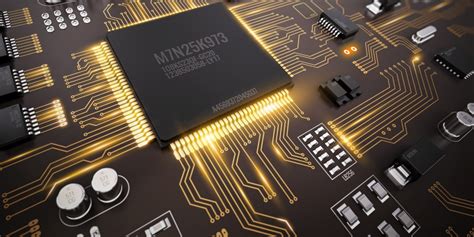
Manufacturing Process Of Multilayer Aluminium PCBs
The manufacturing process of multilayer aluminium PCBs is a sophisticated and intricate procedure that demands precision and expertise. It begins with the selection of high-quality raw materials, primarily aluminium, which serves as the base material due to its excellent thermal conductivity and mechanical strength. The aluminium base is typically coated with a dielectric layer, which acts as an insulator, ensuring that the electrical circuits function correctly without interference.
Once the base material is prepared, the next step involves the application of a copper foil.
This copper layer is essential for creating the conductive pathways that will form the electrical circuits. The copper foil is laminated onto the dielectric layer using a combination of heat and pressure, ensuring a strong bond. This lamination process is critical, as it ensures the durability and reliability of the PCB.
Following the lamination, the multilayer structure begins to take shape.
Multiple layers of dielectric material and copper foil are alternately stacked and laminated together. Each layer is meticulously aligned to ensure that the vias, or vertical interconnect accesses, are correctly positioned. Vias are small holes drilled through the layers, allowing electrical connections between different layers of the PCB. The drilling process must be precise, as any misalignment can lead to circuit failures.
After the layers are laminated and drilled, the next phase involves the application of a photoresist.
This light-sensitive material is applied to the surface of the PCB and then exposed to ultraviolet light through a photomask. The photomask contains the desired circuit pattern, and the exposure process transfers this pattern onto the photoresist. The areas exposed to UV light harden, while the unexposed areas remain soft and can be washed away, revealing the underlying copper.
The exposed copper is then etched away using a chemical solution, leaving behind the desired circuit pattern.
This etching process must be carefully controlled to ensure that the copper pathways are of the correct width and spacing. Any deviations can affect the performance of the PCB. Once the etching is complete, the remaining photoresist is removed, revealing the finished circuit pattern.
To protect the copper circuits and enhance the durability of the PCB, a solder mask is applied.
This protective layer prevents oxidation and short circuits, ensuring the longevity of the PCB. The solder mask is typically green, but other colors can be used depending on the specific requirements of the application.
The final steps in the manufacturing process involve the application of surface finishes and the assembly of components.
Surface finishes, such as HASL (Hot Air Solder Leveling) or ENIG (Electroless Nickel Immersion Gold), are applied to the exposed copper pads to improve solderability and protect against corrosion. Components are then soldered onto the PCB using automated pick-and-place machines, ensuring precise placement and strong connections.
Throughout the entire manufacturing process, rigorous quality control measures are implemented to ensure that each multilayer aluminium PCB meets the highest standards of performance and reliability. These measures include visual inspections, electrical testing, and thermal cycling tests, among others. By adhering to these stringent quality control protocols, manufacturers can produce multilayer aluminium PCBs that are capable of withstanding the demanding conditions of modern electronic applications.
In conclusion, the manufacturing process of multilayer aluminium PCBs is a complex and meticulous procedure that requires a deep understanding of materials science, engineering, and precision manufacturing techniques. By following a series of carefully controlled steps, manufacturers can produce high-performance PCBs that meet the exacting demands of today’s advanced electronic devices.
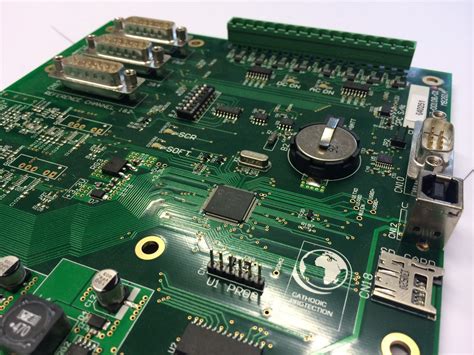
Applications Of Multilayer Aluminium PCBs In High-Power Devices
Multilayer aluminium PCBs have emerged as a pivotal component in the realm of high-power devices, offering a unique combination of thermal management, electrical performance, and mechanical stability. These attributes make them indispensable in various applications where efficient heat dissipation and reliable performance are paramount. One of the primary applications of multilayer aluminium PCBs is in the field of LED lighting. High-power LEDs generate significant amounts of heat, which, if not managed properly, can lead to reduced efficiency and shortened lifespan. The aluminium core in these PCBs acts as an excellent heat sink, effectively dissipating heat away from the LEDs and ensuring consistent performance and longevity. Consequently, multilayer aluminium PCBs are widely used in street lighting, automotive headlights, and high-intensity industrial lighting systems.
In addition to LED lighting, multilayer aluminium PCBs are extensively utilized in power electronics.
Devices such as power supplies, inverters, and motor controllers often operate under high current and voltage conditions, generating substantial heat. The superior thermal conductivity of aluminium helps in maintaining optimal operating temperatures, thereby enhancing the reliability and efficiency of these devices. Moreover, the multilayer design allows for complex circuitry and high-density interconnections, which are essential for modern power electronic systems. This makes multilayer aluminium PCBs a preferred choice for applications in renewable energy systems, electric vehicles, and industrial automation.
Another significant application of multilayer aluminium PCBs is in the telecommunications industry.
With the advent of 5G technology and the increasing demand for high-speed data transmission, the need for efficient and reliable electronic components has never been greater. Multilayer aluminium PCBs provide the necessary thermal management and electrical performance required for high-frequency communication devices. They are used in base stations, signal amplifiers, and other critical infrastructure components, ensuring stable and efficient operation even under demanding conditions.
Furthermore, multilayer aluminium PCBs find applications in the aerospace and defense sectors.
These industries require electronic components that can withstand extreme environmental conditions, including high temperatures, vibrations, and mechanical shocks. The robust construction and excellent thermal properties of multilayer aluminium PCBs make them suitable for use in avionics, radar systems, and missile guidance systems. Their ability to maintain performance integrity under harsh conditions ensures the reliability and safety of critical aerospace and defense applications.
In the realm of consumer electronics, multilayer aluminium PCBs are employed in high-performance computing devices, such as gaming consoles, servers, and advanced computing systems. These devices require efficient heat dissipation to maintain optimal performance and prevent overheating. The use of multilayer aluminium PCBs helps in achieving this by providing effective thermal management and supporting high-density circuitry. This results in enhanced performance, reliability, and longevity of consumer electronic devices.
In conclusion, the applications of multilayer aluminium PCBs in high-power devices are vast and varied, spanning across multiple industries including LED lighting, power electronics, telecommunications, aerospace, defense, and consumer electronics. Their unique combination of thermal management, electrical performance, and mechanical stability makes them an essential component in modern high-power electronic systems. As technology continues to advance and the demand for efficient and reliable electronic components grows, the importance of multilayer aluminium PCBs in high-power applications is expected to increase further, solidifying their role as a cornerstone in the development of cutting-edge electronic devices.

Thermal Management Solutions Using Multilayer Aluminium PCBs
Multilayer aluminium PCBs have emerged as a pivotal solution in the realm of thermal management, particularly in high-performance electronic applications. These advanced circuit boards are designed to address the escalating thermal challenges posed by modern electronic devices, which are becoming increasingly compact and powerful. The integration of multiple layers in aluminium PCBs not only enhances their thermal conductivity but also improves their overall performance and reliability.
One of the primary advantages of multilayer aluminium PCBs is their superior heat dissipation capabilities.
Aluminium, known for its excellent thermal conductivity, serves as an effective heat sink, efficiently transferring heat away from critical components. This is particularly crucial in applications where excessive heat can lead to component failure or reduced performance. By incorporating multiple layers, these PCBs can manage higher thermal loads, ensuring that the electronic components operate within safe temperature ranges.
In addition to their thermal management properties, multilayer aluminium PCBs offer enhanced mechanical stability.
The robust nature of aluminium provides a sturdy foundation, reducing the risk of warping or damage under mechanical stress. This is especially beneficial in environments where electronic devices are subjected to harsh conditions, such as in automotive or industrial applications. The durability of these PCBs ensures long-term reliability, minimizing the need for frequent replacements or repairs.
Furthermore, the design flexibility of multilayer aluminium PCBs allows for the integration of complex circuitry within a compact form factor.
This is achieved by stacking multiple layers of conductive material, separated by insulating layers, to create a dense and efficient circuit layout. The ability to incorporate more components and interconnections within a smaller footprint is a significant advantage in the design of modern electronic devices, where space is often at a premium. This compactness does not compromise performance; rather, it enhances the overall functionality of the device.
Moreover, the use of multilayer aluminium PCBs contributes to improved signal integrity and reduced electromagnetic interference (EMI).
The multiple layers can be strategically designed to include ground planes and shielding, which help in minimizing signal loss and crosstalk. This is particularly important in high-frequency applications, where maintaining signal integrity is critical for optimal performance. The reduction in EMI also ensures that the device complies with regulatory standards, making it suitable for a wide range of applications.
The manufacturing process of multilayer aluminium PCBs, while more complex than that of single-layer boards, has seen significant advancements. Modern fabrication techniques, such as laser drilling and advanced lamination processes, have made it possible to produce these PCBs with high precision and consistency. This ensures that the final product meets the stringent quality standards required for high-performance applications. Additionally, the use of advanced materials and coatings further enhances the thermal and electrical properties of these PCBs, making them a reliable choice for demanding environments.
In conclusion, multilayer aluminium PCBs represent a significant advancement in thermal management solutions for electronic devices. Their superior heat dissipation, mechanical stability, design flexibility, and improved signal integrity make them an ideal choice for a wide range of applications. As electronic devices continue to evolve, the demand for efficient and reliable thermal management solutions will only increase, solidifying the importance of multilayer aluminium PCBs in the future of electronics.


